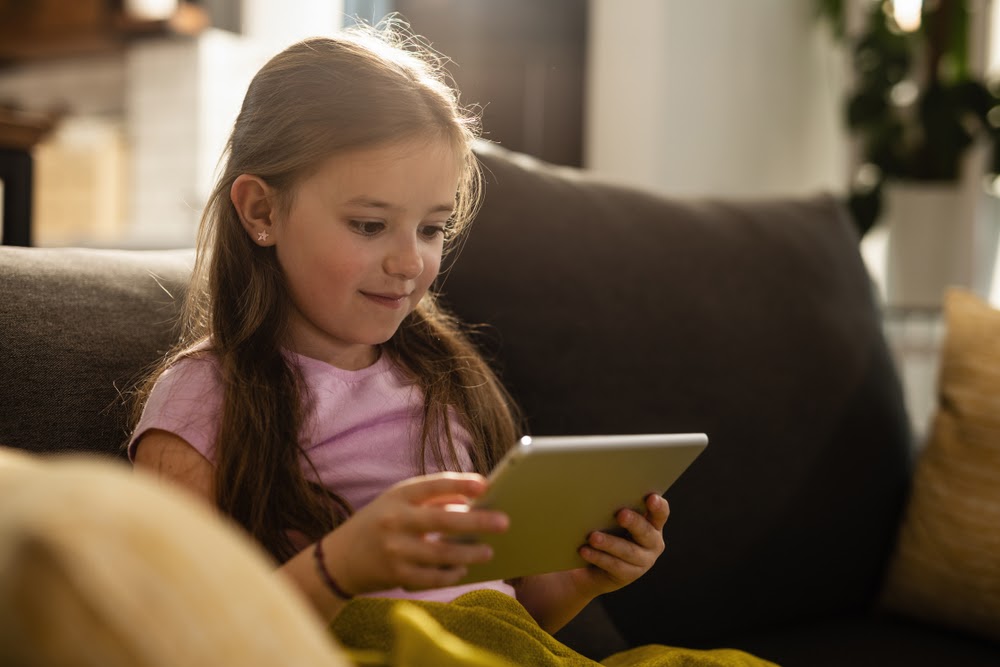
Children may struggle to read when they are early in the elementary years or even when they hit later grades (before middle school). No matter what age or grade level that a parent begins to notice their child struggling, the reaction may be the same: how can parents help?
Reading apps can help children practice aspects of reading, and some may even offer built-in tutoring capabilities. One of the best apps to learn to read can even be used throughout the elementary school years.
Yet, there are so many types of reading apps available. The choices could be overwhelming to parents. Here’s what to know about finding the best apps to learn to read and, most importantly, how to find the best app that can help a child’s particular reading struggle.
The Choices Really Are Vast
To find out what reading app options are available on a particular device, parents might simply search “reading app” via Google Play or the App Store (for Apple devices). And this is where the overwhelming sense of choice becomes very apparent.
Searching the term “reading app” on Google Play can leave parents scrolling through so many apps that they seemingly cannot be counted. The App Store pulls up the same nearly endless selection of apps. To narrow the search (via Apple), there is the option to click on links for games, light, comprehension, speed, text, anime, help, glasses, card and more. What does all this mean? Really, it’s just another way to weed out apps that aren’t a great fit. However, it could complicate the search for parents; one of the sorting choices is astrology. So how does this fit into reading? The term refers to astrology readings, not literacy!
When looking for a reading app to help a child, parents will likely need to know a bit more about their child’s struggles. Or they might just choose to focus on words like fluency, comprehension or sight words to narrow down search results.
Here are a few other helpful terms to type into search queues via the App Store or Google Play to find reading apps focused on literacy:
- Helper reading app
- Fluency reading app
- Comprehension reading app
- Sight word reading app
- Phonics reading app
Parents also could enter in their child’s grade level for a more specific app search. For example “first grade reading app.” On a tight budget? Search for “free reading app.”

Finding Reading Apps that Grow with Young Readers
Parents might not want to find a grade-specific app. Instead, they may be looking for an app that will grow with their child. If a child’s reading struggles become apparent at a young age (like kindergarten), parents might wish to use an app that their child can use throughout the early elementary years.
While searching for “k-5 reading app” might seem like a logical way to find these apps, unfortunately the search doesn’t necessarily filter out all the options that don’t fit into the growth range. Parents might still see apps just for younger children. Or apps that just aren’t relevant.
Instead of searching for programs via the App Store or Google Play, parents might just turn to Google. Searching for “reading program for struggling readers” will bring up many articles and options (including Readability!). This could be a good way to sort through and find relevant programs. Google also includes other related searches at the bottom of the page. Use these suggested terms to find any other additional options.
The Best App to Learn to Read
When children are beginning the road to reading, they will likely focus on blends, sight words, letter identification, sounds and basic comprehension. Children may struggle with one or multiple pieces of the literacy puzzle. For this reason, the best apps to learn to read are the apps that provide the best help for a child’s individual struggles.
Parents can find so many different types of reading apps. Some are games that help young readers identify and practice sight word identification. Others focus on letter recognition, sounds and phonics. There are apps that could help with other struggles, too.
However, reading apps are not always designed as games. Some are designed as lesson-based instruction. These apps can offer tutoring capabilities to guide lessons and provide additional help for children if they struggle. For example, Readability includes a built-in AI tutor that is programmed to recognize each user’s voice. When a reader stumbles or makes a mistake, the AI tutor provides help and corrections.
Parents also might wish to delve into the design of the app. How does the app guide reading instruction? Does the app include help with fluency, comprehension, or both? Again, parents may zero in on the apps that best meet the needs of the child.

Are the Best Apps to Learn to Read Expensive?
A family’s budget can come into play when they are looking for tools to help their child. Tutoring could be a logical choice for parents to ensure that their child receives more one-on-one instruction to help ease their struggles. However, the rates of tutors may vary. Some families simply don’t have the budget to pay for hourly sessions each week…or even each month.
Apps can be a less expensive way to provide reading help for children. Some of these apps might even be free. However, free apps might offer limited capabilities. And free apps designed as games also could include in-app purchase options; this means that if parents aren’t careful, their child could make purchases within the game. These purchases could rack up surprise charges. When using apps that offer in-app purchases, parents can disable the in-app purchase option on their phone or device to ensure they don’t receive any surprise charges.
Reading apps that offer more immersive or lesson-based instruction might require a subscription. For example, Readability charges $19.99 per month to access the program. Prices for programs may vary. When reviewing the subscription price, parents should understand when they will be billed and how often they will be billed. They also might investigate any limitations of the subscription. For example, how many users (children) can access the account? Readability allows families to add up to three users on a single account. For families with three children, the subscription price is really less than $7 per month per child.
Ask to Try out the App
Interested in a particular app or reading program? Parents might not know if it’s a fit simply by reading about the program online. Many programs—including Readability—include a free trial period that allows families to explore the stories and the AI tutor.
If there isn’t information about a free trial available on a program’s website, parents might drop a note to customer service to inquire about scheduling a trial. It never hurts to ask. When using a free trial, though, parents might still be required to enter billing information.
Measuring a Child’s Reading Growth
The best app to learn to read also should provide parents with a way to measure the success of the program. Parents want to know that their child is making progress. When researching programs, parents can look into how the program measures success and how it reports these results to parents.
Readability provides parents with a portal called the Parent Dashboard. This portal gives parents all the details and insight related to their child’s reading progress. The Dashboard includes the number of words the child can read per minute, the child’s current reading level and shows parents how long the child used Readability. Parents can even email this info to the child’s teacher via a customized reading report.
Interested in trying out Readability? Parents can request a free trial today!

 Español
Español